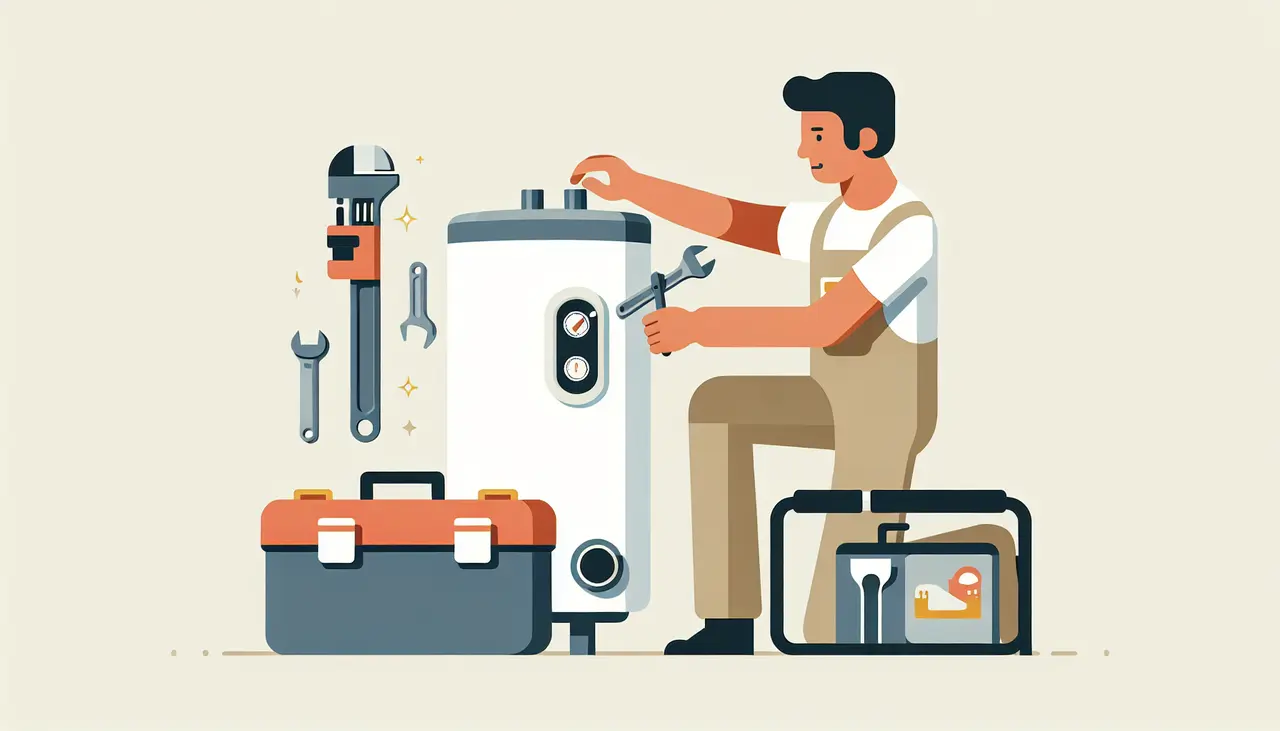A broken water heater can throw a wrench in your daily routine. Whether it’s cold showers or lackluster dish cleaning, getting your water heater back up and running is a priority. In this FAQ, we’ll walk you through the steps to diagnose and possibly fix your water heater issues.
Check the Power Supply
First, verify that your water heater is receiving power. For electric heaters, check the circuit breaker to ensure it hasn’t tripped. If you have a gas heater, make sure the pilot light is on.
If everything seems fine but the heater still doesn’t kick in, it might be a good idea to reset the circuit breaker. Often, a simple reset can solve many electrical issues. Gas water heaters, on the other hand, might need you to relight the pilot light.
For the adventurous DIYers, checking the fuse or replacing a faulty component might also be on the table. But remember, dealing with electricity can be dangerous, so prioritize safety or seek professional assistance if you’re unsure.
Inspect the Thermostat Settings
Ensure the thermostat is set to your desired temperature. Sometimes adjusting the thermostat can solve the problem if it has been accidentally set too low.
It’s easy to overlook thermostat calibration, which might lead to inaccurate temperature readings. A thermostat reset can occasionally align these readings back to normal.
For modern units, reviewing the troubleshooting section of your manual or accessing online support pages can provide additional insights specific to your heater model.
Flushing the Tank
Sediment buildup can affect your water heater’s efficiency. Flushing your tank can often resolve issues with inconsistent hot water or unusual noises.
To start, turn off the power supply and attach a hose to your tank’s drain valve. Carefully drain the tank to remove built-up sediment that can insulate the water and reduce heating efficiency.
You might be surprised at the amount of debris collected over time, emphasizing the need for regular maintenance to extend the life of your appliance.
Examine the Heating Elements
For electric water heaters, the heating elements might be faulty. You can test these with a multimeter. If necessary, replacement elements are relatively straightforward to install.
Often, poor heating can be attributed to burnt-out heating elements. Carefully follow safe practices to diagnose and replace these components if needed.
Consider keeping spare elements on hand for emergency swaps, minimizing downtime when something goes amiss.
Seek Professional Help
If you’ve tried these steps and your water heater still isn’t working, it may be time to call a professional. They can diagnose and fix more complex issues that might require expertise.
Professional water heater repair services provide reassurance with their extensive training and experience. Choosing to hire a certified professional can prevent potential safety hazards that come with DIY attempts.
At times, the complexity of water heater repair demands nuanced understanding and specialized tools—another compelling reason to bring in a professional.
Conclusion: Getting Back to Steady Hot Water
By following these steps, you can often troubleshoot and resolve common water heater issues on your own. Remember, if a problem seems beyond your skills or you’re concerned about safety, it’s always best to call a professional for water heater repair.










